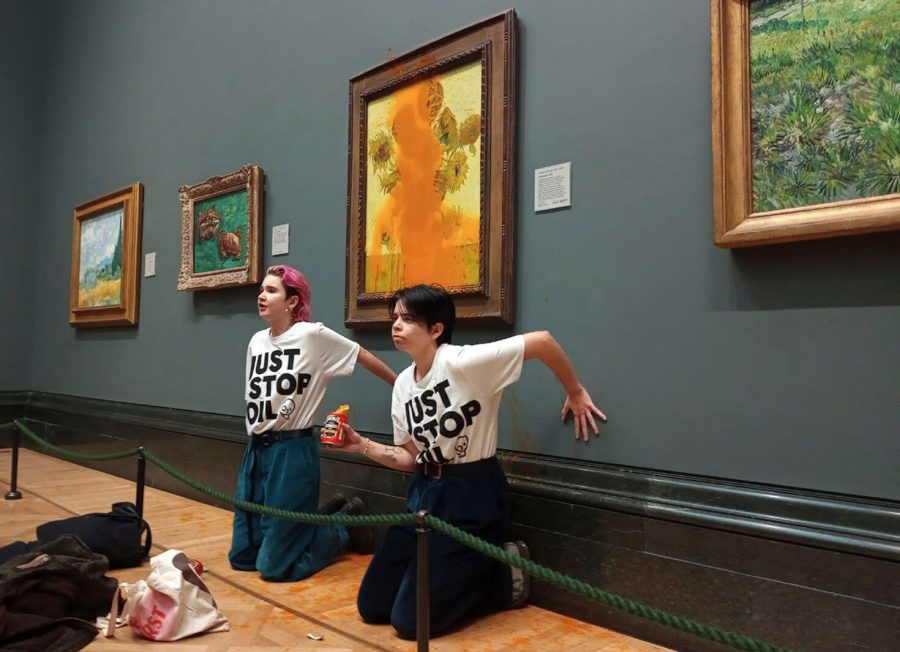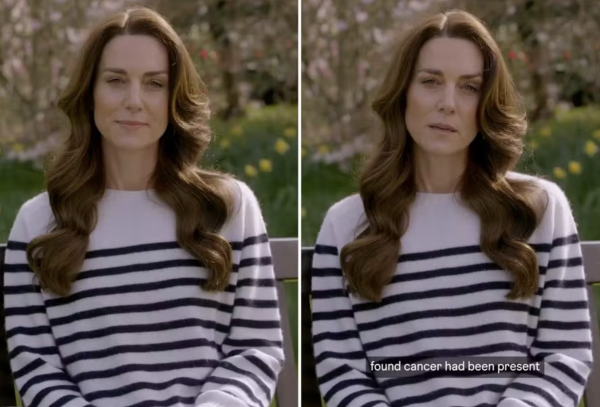Protesters throw tomato soup on Gogh’s “Sunflowers”
On Oct. 14, climate change activists threw tomato soup on the famous Van Gogh painting “Sunflowers” in London’s National Gallery before gluing their hands on the wall.
The protesters were Phoebe Plummer and Anna Holland, both members of the environmental activist group Just Stop Oil. After throwing the soup and gluing their hands, Plummer asks the people in the room, “What is worth more, art or life?”
A video recording of the situation went viral on social media platforms. Overall, reactions were largely negative because most people believed vandalism was not a justified method of spreading their message.
“Destroying artworks might be justified as a means of protesting, but I believe that this protest was inefficient and unnecessary,” Amy Cha (11), student artist, said. “Even if we overlook the act of vandalism, this Van Gogh painting had nothing to do with their message. It would have been better to have chosen a famous artwork related to climate change.”
Recently, using paintings as a protest-strategy has become more common, starting from when a climate change activist threw a cake on the Mona Lisa early this year. Last Sunday, another group of climate change activists threw mashed potatoes on a Monet painting. That instance was even more consequential because the painting had no protection, and thus was completely destroyed.
“I don’t think vandalism of the art can be justified in any way.” Sean Kim (10), art class student. “Not only is the art private property of some person, but it also is a precious piece that is very unique. I think vandalism is just a cheap way of gaining negative attention.”

Waan is a junior copy editor for the Tiger Times Online team. He mainly enjoys writing articles about sports and Korean news. He loves watching the Premier...











